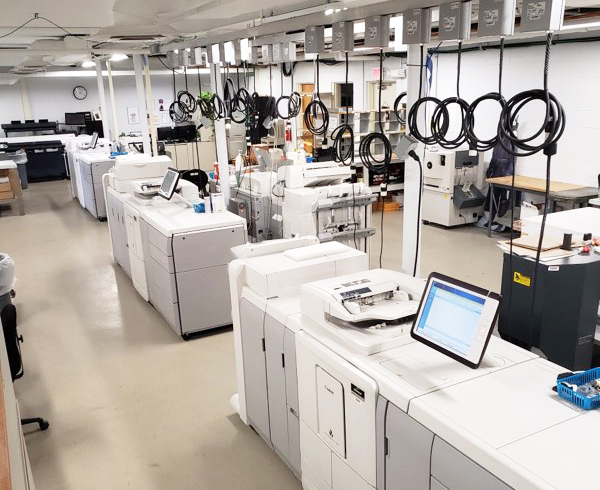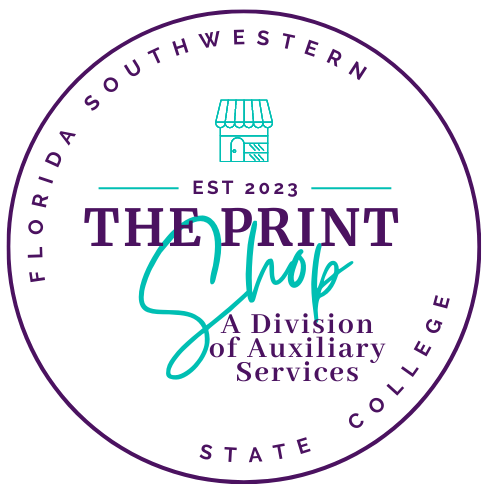The Ultimate Overview to Using Printing Providers for Customized Art Prints
Guiding via the globe of custom art prints calls for a clear understanding of various printing solutions. Artists must consider factors such as printing strategies and materials to attain the desired outcome. Each decision, from art work preparation to shade calibration, plays a vital role in the last item. As they check out these components, musicians can expose the potential for their work to attach with audiences in a significant way. What actions can they require to guarantee their prints stick out?
Recognizing Various Kinds Of Printing Solutions
Although several people may forget the ins and outs of printing solutions, comprehending the different kinds available is necessary for anyone seeking to create custom-made art prints. One of the most usual kinds include digital printing, offset printing, and screen printing. Digital printing is favored for its fast turn-around and capacity to generate top quality pictures directly from digital files, making it suitable for little runs. On the other hand, countered printing deals premium photo top quality and is cost-effective for larger amounts, making use of plates to move ink onto paper. Screen printing, commonly made use of for fabrics and advertising things, entails pressing ink via a mesh display, permitting vivid shades and structures. Each method has its distinct advantages and limitations, making it essential for musicians and developers to analyze their details requirements, such as quantity, preferred high quality, and budget, before picking a printing service that lines up with their creative vision.
Choosing the Right Products for Your Prints
Choosing the appropriate products is important for achieving high-quality custom art prints. Recognizing the different kinds of paper and the importance of ink top quality can substantially affect the outcome. Musicians have to think about these factors to assure their vision is properly represented in the published piece.
Paper Types Explained
Picking the ideal paper type is crucial for attaining the preferred aesthetic and resilience in personalized art prints. Different alternatives exist, each offering distinctive qualities. Shiny paper enhances color vibrancy and information, making it perfect for digital photography prints. On the other hand, matte paper gives a softer finish, which is better for artwork that requires nuance and texture. Fine art paper, often made from cotton or alpha cellulose, provides historical top quality and appropriates for reproducing elaborate details in paints (Print Shop Near Me). In addition, specialty papers, such as watercolor or canvas, can add one-of-a-kind visual effects. Eventually, picking the suitable paper kind will significantly affect the last discussion, ensuring that the art work is both lasting and visually enticing
Ink Top Quality Issues
Ink quality plays a necessary duty in the overall success of custom-made art prints. Top notch inks assure vibrant colors, sharp details, and durability, which are crucial for showcasing creative work. When choosing printing solutions, musicians must take into consideration pigment-based inks over dye-based alternatives, as they use far better discolor resistance and color stability. Additionally, the option of ink must match the selected paper type, enhancing the print's visual impact. Environmental elements, such as humidity and temperature, can likewise affect ink performance; therefore, artists ought to make inquiries concerning ink solutions that stand up to these aspects. Ultimately, purchasing premium ink top quality can raise the end product, guaranteeing that the art print holds to the artist's vision for years ahead.
Checking Out Printing Strategies: Digital vs. Traditional
While both electronic and standard printing strategies have their special advantages, the choice on which technique to use commonly depends upon the details requirements of the artwork. Digital printing masters flexibility and rate, enabling for quick turn-around times and the ability to publish on demand. This approach is especially beneficial for artists that need small runs or special pieces, as it eliminates the requirement for extensive arrangement processes.Conversely, standard printing techniques, such as lithography and screen printing, often create richer colors and appearances, appealing to artists seeking a much more genuine and responsive coating. These methods can improve the deepness and top quality of the art work, making them appropriate for bigger editions. Furthermore, typical methods may supply a distinct aesthetic that electronic printing often battles to duplicate. Eventually, the choice between these methods need to consider factors like preferred top quality, amount, and artistic intent, directing artists to one of the most ideal alternative for their projects.

Preparing Your Artwork for Printing
Effectively preparing art work for printing needs mindful focus to detail, no matter the selected printing method. Musicians should assure that their documents are developed at the ideal resolution, generally 300 DPI, to keep sharpness and clarity. The correct color mode, typically CMYK for print, is essential to attain the preferred color precision. Artists must additionally consider the dimensions of the art work, making sure to consist of bleed locations if required, to stop any kind of unwanted white sides after trimming.Additionally, documents layouts play an important duty; TIFF and PDF are often chosen for high-grade prints. Prior to submission, it is essential to evaluate the artwork for any kind of blemishes or undesirable aspects. By meticulously examining these elements, artists can enhance the likelihood of their prints aligning with their imaginative vision, eventually resulting in an effective printing outcome.
The Importance of Shade Calibration and Proofing
Color calibration and proofing are essential steps in the printing procedure, as they ensure that the final result precisely mirrors the artist's vision. Proper color calibration warranties that the colors displayed on the display match those that will certainly be printed. This procedure involves adjusting the display settings, printer accounts, and inks to achieve a regular shade representation.Additionally, proofing allows musicians to sneak peek their work prior to the final print run. This phase enables them to spot and rectify any type of discrepancies in saturation, detail, or color, consequently reducing expensive errors. By utilizing electronic or hard-copy proofs, artists can make informed choices concerning modifications required for optimal results.Incorporating shade calibration and proofing into the printing operations not only improves the top quality of the last product however additionally fosters a reliable partnership between the printing and the musician solution, ensuring complete satisfaction and fidelity to the initial art work.
Choosing the Perfect Dimension and Format for Your Prints

Advertising and Marketing Your Customized Art Prints
Marketing and offering personalized art prints requires a solid brand identity to attract attention in an open market. Reliable online promo techniques and the strategic use of social media sites platforms can considerably boost exposure and engagement. By integrating these components, musicians can create a compelling visibility that attracts prospective customers.
Structure Your Brand Identification
Developing a strong brand identity is essential for artists looking to successfully market and market their personalized art prints. This identification encompasses the artist's distinct style, worths, and tale, which reverberate with possible customers. Musicians need to develop a natural visual visibility throughout all systems, including logos, color pattern, and typography that show their imaginative vision. Furthermore, a clear objective declaration assists interact the musician's objective and passion. Engaging storytelling concerning the inspiration behind each his comment is here item can foster emotional connections with the audience. Consistency in messaging, whether on social networks or packaging, boosts recognition and trust fund. By thoroughly curating their brand name identity, click to investigate artists can distinguish themselves in a competitive market, attracting faithful consumers who appreciate their artistry.
Reliable Online Promo Methods
What methods can artists employ to efficiently promote their personalized art publishes online? Initially, establishing an expert site showcasing the artwork is crucial. This site must include in-depth descriptions and high-quality photos to engage potential purchasers. In addition, artists can use email marketing by constructing a customer list to share updates, promotions, and new launches. Collaborating with blog owners and influencers in the art neighborhood can expand reach and reliability. Using special pieces or limited-time price cuts can likewise create seriousness, motivating acquisitions. Additionally, optimizing material for search engines via relevant keywords will certainly improve exposure. Lastly, maintaining a blog site concerning the artistic process can draw in art fanatics, promoting a much deeper connection with the audience and improving the general advertising and marketing method.
Utilizing Social Network Operatings Systems
Social network systems act as powerful tools for artists seeking to market and sell their personalized art prints. By leveraging systems like Instagram, Facebook, and Pinterest, musicians can display their job to a substantial target market. Engaging visuals and critical hashtags can enhance exposure, drawing prospective buyers to their profiles. Consistently uploading web content, such as behind-the-scenes procedures or new styles, aids keep target market passion and cultivates a feeling of neighborhood. Additionally, musicians can make use of targeted advertising and marketing to get to certain demographics, improving the opportunities of sales. Collaborations with influencers or other musicians can additionally magnify exposure. Inevitably, a well-curated visit this web-site social media visibility not just promotes customized art prints but likewise develops a loyal consumer base gradually.
Frequently Asked Inquiries

Just how Do I Locate Reputable Printing Service Providers?
To discover reliable printing company, one need to look into online reviews, look for recommendations from peers, contrast portfolios, demand samples, and analyze customer support responsiveness. This detailed technique guarantees informed choices and adequate outcomes.
What Is the Normal Turnaround Time for Personalized Prints?
The normal turnaround time for customized prints differs by service provider, however typically varies from a few days to 2 weeks. Variables influencing this include order dimension, intricacy, and the particular printing techniques utilized.
Can I Get a Reimbursement if I'm Not Completely satisfied With My Prints?
The question of acquiring a reimbursement for disappointing prints often depends upon the certain printing solution's plans. Numerous business use satisfaction assurances, while others may have stringent return problems, emphasizing the importance of evaluating terms in advance.
Are There Any Type Of Hidden Expenses Related To Printing Providers?
Several printing solutions might consist of concealed prices such as arrangement costs, delivery costs, or added fees for details products. It's necessary for consumers to ask concerning all prospective costs prior to completing their order.
Exactly How Can I Ensure My Prints Are Environmentally Friendly?
To ensure prints are environmentally friendly, one must choose green inks, recycled paper, and lasting printing practices. Researching printing solutions that prioritize sustainability and obtaining accreditations can further ensure marginal environmental influence in the printing procedure. Steering through the globe of customized art prints requires a clear understanding of different printing solutions. Lots of people might overlook the intricacies of printing solutions, comprehending the various kinds offered is crucial for any person looking to produce custom art prints. The most usual types consist of electronic printing, counter printing, and screen printing. Efficiently preparing artwork for printing requires cautious attention to information, regardless of the picked printing method. Prints intended at galleries may call for common sizes to promote framing, whereas one-of-a-kind styles might appeal to collection agencies looking for something distinctive.Lastly, the printing service's capacities should be reviewed.